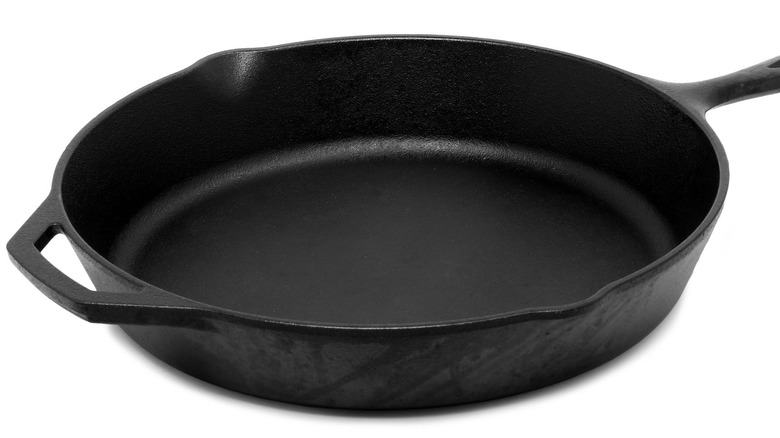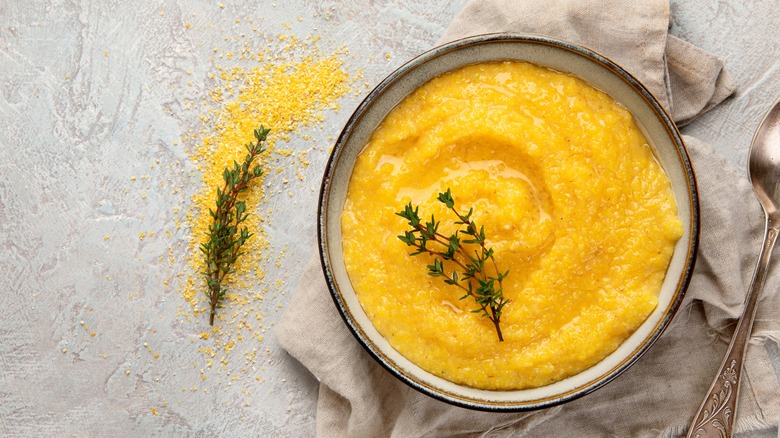How You Can Use A Cast-Iron Skillet As A Flame Tamer
Tempted to blame a cooking snafu on your stove? You may be right. Stoves are temperamental and, frustratingly, their burners often can't be trusted. Cooks Illustrated tested the burners of seven different gas stoves, and each had wildly different results. Cooking on inconsistent heat leads to erratic cooking outcomes. For example, searing steak on uneven heat can lead to one part that's so well done it resembles shoe leather while another area is so undercooked it's practically mooing. For items that require a delicate heat, the variations on BTU output can ruin the result.
To remedy this, using a flame tamer, often a metal disk placed on top of the stove's burner that creates a barrier between the heat of the stove and the pan. This ensures that heat is spread out evenly across the cooking surface (via HomeSteady). While you can purchase a dedicated flame tamer, if you're in a pinch — or your kitchen cabinets groan under the weight of all the gizmos already stored in them – America's Test Kitchen recommends using your cast-iron pan for the job.
Why a cast-iron skillet works as a flame tamer
Cooking Issues claims that it's a fallacy that cast-iron pans are excellent at providing for even cooking. In fact, according to the website, because cast-iron is a poor heat conductor, when placed over a flame, it can have hot spots just like any other pan. However, when cast-iron is heated in the oven, for example, it's able to retain the heat and provide a consistent temperature. The Washington Post reports how that's the trade-off: Cast-iron is poor heat conductor because it's wonderful at retaining it. Because of its poor conductivity, it's slow to heat, but that also means that it's also slow to cool down. This is what delivers the sought-after even heating. So patience during the heating process will be rewarded.
America's Test Kitchen offers this flame tamer hack for dishes that easily scorch, like polenta or mashed potatoes. Put the cast-iron skillet on the stove over a low flame. Place your sauce pan in the skillet rather than directly onto the burner. With the cast-iron holding the heat, it should keep delicate ingredients from burning in any hot spots.

